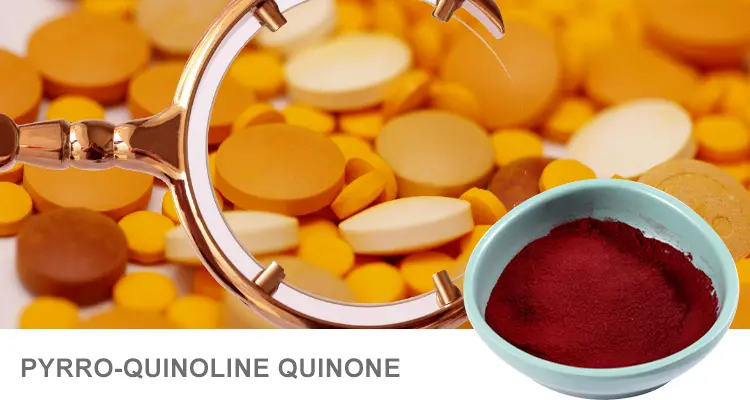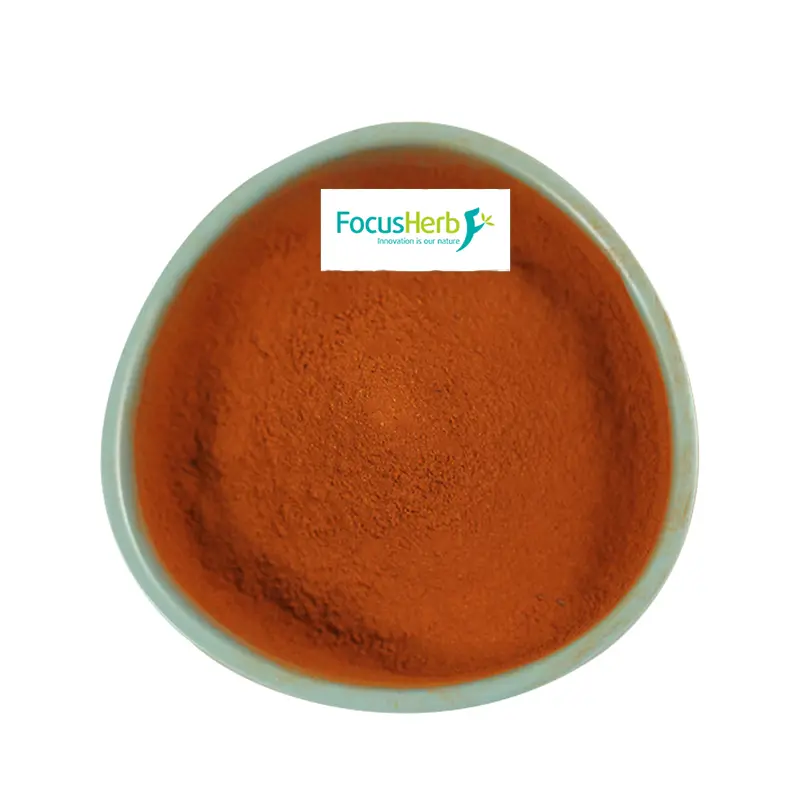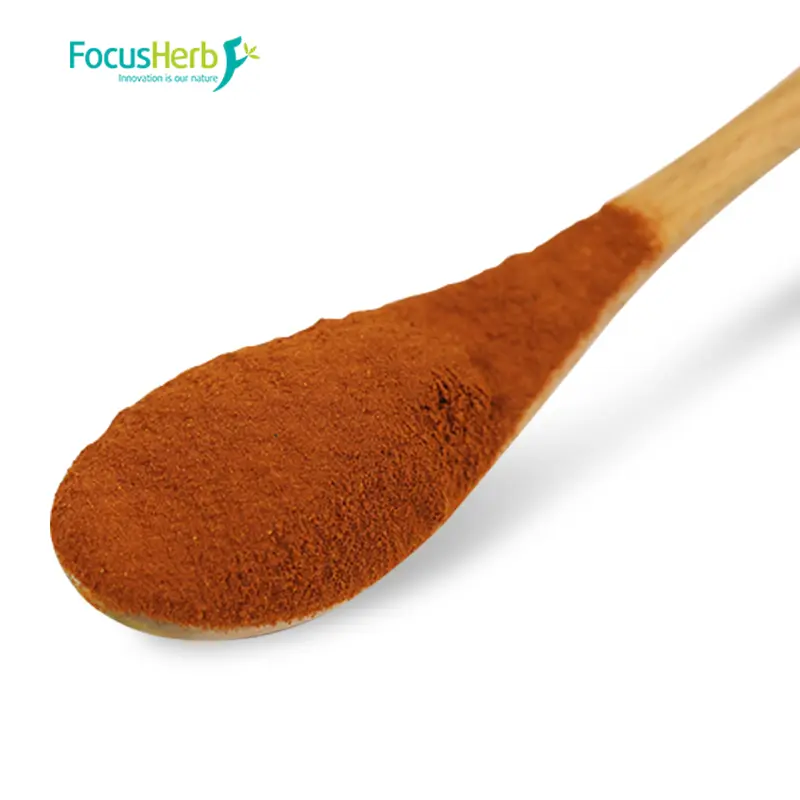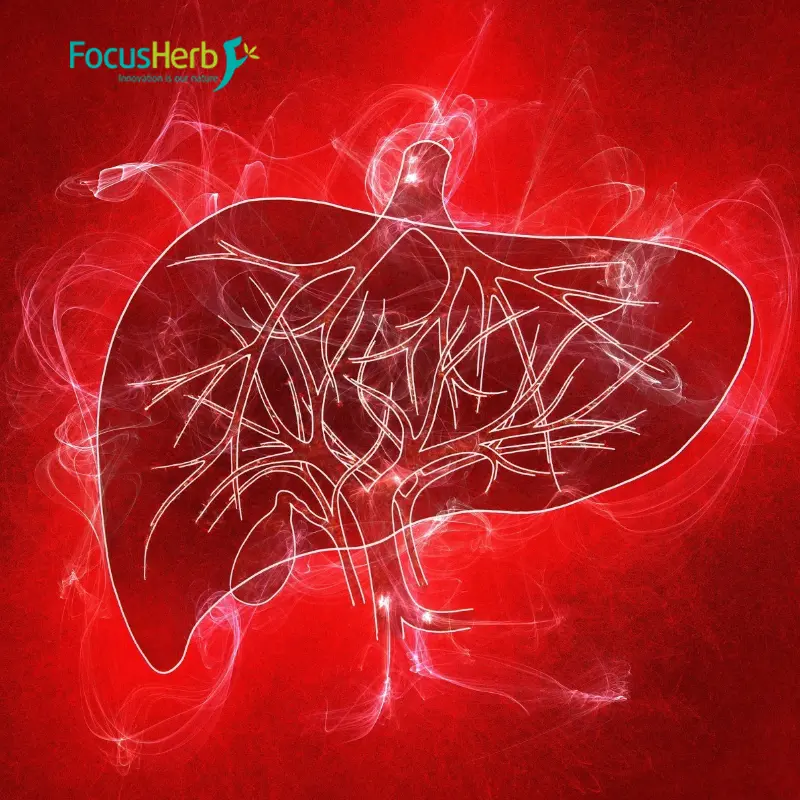The discovery of PQQ was like a rising star, ushering in a new dawn for the life sciences. In the 1950s, scientist J.G. Hauge first discovered PQQ while researching the extraction of specialized nutrients from microorganisms. He discovered a specific enzyme in a culture of Pseudomonas fluorescens that triggered a surge in metabolism. However, due to limitations in the technology at the time, he was unable to decipher its chemical composition. It wasn’t until 1979 that Japanese chemist Ryuo Sakamoto successfully isolated PQQ from black vinegar from Amami Oshima Island, a fermented food, using an innovative extraction method. He confirmed its identity as a novel redox coenzyme, thus opening the door to PQQ research.
Since then, researchers have conducted in-depth research on PQQ, discovering its widespread distribution in nature, from microorganisms to plants and animals, and even in human breast milk. PQQ is involved in key physiological processes in organs such as animal liver and kidneys, as well as in the leaves and fruits of various plants. As research continues, more properties and functions of PQQ are being revealed, highlighting its crucial role in energy metabolism and antioxidant defense. In 2023, my country approved PQQ as a new food ingredient, marking its transition from the laboratory to industrial application and bringing greater potential for public health.
Molecular structure and properties
PQQ possesses a unique pyrroloquinoline quinone structure, consisting of a pyrrole ring and a quinoline ring connected by a specific chemical bond, creating a unique redox-active center. This structure endows PQQ with remarkable chemical properties, resulting in both water solubility and strong antioxidant activity. In aqueous solutions, PQQ is stable and rapidly dissolves, facilitating its transport and activity within the body.
With its potent antioxidant activity, PQQ acts as a loyal guardian, constantly defending cells against free radical attacks. Free radicals are unstable molecules produced during cellular metabolism. Excessive free radicals can attack biomolecules such as DNA, proteins, and lipids within cells, leading to cell damage and aging. PQQ, through its own redox reactions, converts free radicals into stable substances, effectively mitigating oxidative stress-induced cell damage, protecting vital organs such as the heart and liver, and maintaining overall health.
PQQ also readily binds to metal ions, forming complexes with specialized functions. Within cells, these complexes participate in various enzymatic reactions, modulating cell signaling pathways and profoundly influencing processes such as cell growth, differentiation, and apoptosis. However, PQQ is relatively unstable, and exposure to light and high temperatures can easily cause its structure to change, leading to reduced activity. When storing and using PQQ, it must be kept away from light and kept at low temperatures to ensure its biological activity is maintained.
Natural Sources and Dietary Supplements
PQQ is widely distributed in nature and is found in many foods. Fermented foods are a good source of PQQ, such as natto. During the fermentation process, microbial activity stimulates the production of PQQ, significantly increasing its content. Kiwifruit, for example, contains approximately 10-20ng of PQQ per 100g of pulp; spinach, for example, also contains significant amounts. Meat, fish, and grains also contain certain amounts of PQQ.
Unfortunately, the human body lacks the ability to synthesize PQQ and must rely on external sources. While some foods in the daily diet contain PQQ, the concentrations are generally low, insufficient to meet the body’s optimal physiological needs. Research suggests that the typical daily intake for adults is approximately 20-40mg. Breast milk contains 140-180ng/mL of PQQ, demonstrating its crucial role in infant growth and development, providing essential nutritional support during early childhood and promoting the development of the nervous and immune systems. For those who cannot get enough PQQ from their daily diet, dietary supplements are an effective alternative. PQQ supplements are available in a variety of forms, including tablets, capsules, and oral solutions, allowing consumers to choose the right product based on their needs and preferences. However, when choosing and using PQQ supplements, it is important to follow professional advice and observe appropriate dosage to ensure safe and effective health benefits.
PQQ’s Core Functions: Multi-Dimensional Protection for Health and Well-being
(I) Antioxidant and Cell Protection
During the complex process of cellular metabolism, free radicals such as hydroxyl radicals (・OH) and superoxide anions (O₂・⁻) are produced in large quantities. These free radicals are extremely reactive and aggressively attack biomolecules within cells, triggering lipid peroxidation reactions that damage membranes and other structures, disrupting normal cellular function and accelerating cellular aging. PQQ, with its unique molecular structure, precisely identifies and captures these free radicals. Through its own redox reactions, it converts them into harmless substances, effectively blocking the lipid peroxidation chain reaction, protecting critical structures such as mitochondrial membranes, and delaying cellular oxidative damage.
Research has demonstrated that PQQ’s antioxidant capacity far exceeds that of traditional antioxidants, vitamins C and E. In cell experiments, when administered to cells at equivalent molar concentrations of PQQ, vitamins C, and E, PQQ significantly outperformed the other two, effectively reducing intracellular oxidative stress. In animal experiments, supplementing PQQ with mice modeling oxidative stress significantly reduced malondialdehyde (MDA, a lipid peroxidation product) levels in tissues such as the liver and heart, while significantly increasing superoxide dismutase (SOD), an endogenous antioxidant enzyme, activity. This suggests that PQQ can effectively mitigate oxidative damage and enhance the antioxidant defense system.
PQQ’s antioxidant effects are also reflected in its multi-organ protection. In a model of myocardial ischemia-reperfusion injury, pre-treatment with PQQ significantly reduced myocardial infarction size and cardiomyocyte apoptosis. This is because PQQ can reduce oxidative stress in myocardial tissue, inhibit the release of inflammatory factors, regulate mitochondrial function, and maintain stable cardiomyocyte energy metabolism, thereby effectively alleviating myocardial damage caused by ischemia-reperfusion.
In the liver, PQQ can mitigate oxidative stress induced by factors such as alcohol and drugs. Experiments have shown that supplementing PQQ with mice exposed to chronic alcohol consumption increased glutathione (GSH, a key antioxidant) levels in the liver and decreased alanine aminotransferase (ALT) and aspartate aminotransferase (AST), indicating enhanced liver antioxidant capacity and alleviated damage. In the kidneys, PQQ can inhibit the progression of renal fibrosis. In a model of renal fibrosis induced by unilateral ureteral obstruction (UUO), PQQ activated the endogenous antioxidant system by regulating the Nrf2 signaling pathway, reducing oxidative stress and inhibiting renal interstitial fibroblast activation and extracellular matrix deposition, thereby protecting renal function.
(II) Regulation of Mitochondrial Function
Mitochondria, as the “energy factories” of cells, play a central role in energy metabolism. PQQ significantly regulates mitochondrial function, optimizing energy metabolism at multiple levels. PQQ can promote ATP synthesis and enhance the activity of mitochondrial complexes. In the electron transport chain within the inner mitochondrial membrane, complexes I, III, and IV participate in oxidative phosphorylation. PQQ binds tightly to complexes I and III, enhancing their catalytic activity, accelerating electron transfer and promoting proton transport across the membrane, thereby increasing ATP production. Studies have found that the addition of PQQ to cultured cells significantly increased intracellular ATP levels and accelerated mitochondrial respiration, indicating a significant boost in cellular energy metabolism.
PQQ also has a positive impact on glucose and lipid metabolism. In an obese animal model, mice fed a high-fat diet supplemented with PQQ showed a significant reduction in visceral fat accumulation. Further research has revealed that PQQ promotes fat breakdown by enhancing fatty acid β-oxidation, while simultaneously inhibiting the expression of genes involved in lipogenesis and reducing fat synthesis, thereby regulating lipid metabolism. PQQ can also improve insulin resistance, enhance cellular glucose uptake and utilization, and maintain blood sugar stability, playing a crucial role in preventing and improving metabolic syndrome.
With aging, mitochondrial function gradually declines, leading to insufficient cellular energy supply and contributing to aging. PQQ has a significant effect in delaying mitochondrial aging by activating the PGC-1α pathway. PGC-1α is a key regulator of mitochondrial biogenesis. PQQ stimulates PGC-1α expression, thereby promoting mitochondrial DNA replication, transcription, and protein synthesis, increasing mitochondrial number and improving mitochondrial quality, thereby delaying age-related mitochondrial decline.
In experiments with aging mice, mice supplemented with PQQ showed significant improvements in muscle mitochondrial number and function, as well as enhanced muscle endurance. In cognitive function tests, these mice demonstrated improved learning and memory abilities in a water maze test, and significant improvements were also observed in mitochondrial-related markers in the hippocampus. This suggests that PQQ, by improving mitochondrial function, has a positive effect on age-related muscle and cognitive decline, providing strong support for delaying aging.
(III) Neurological and Immune Regulation
In the nervous system, PQQ establishes a complex and effective protective network. Nerve growth factor (NGF) is crucial for neuronal growth, survival, and differentiation. PQQ stimulates astrocytes and fibroblasts to synthesize and secrete NGF, promoting axonal growth and synapse formation, thereby strengthening interneuronal connectivity and signaling. In a beta-amyloid-induced Alzheimer’s disease model, PQQ upregulates NGF expression, repairs damaged neurons, reduces neuronal apoptosis, and improves cognitive dysfunction in mice. The mice significantly shortened the time it took to find the platform in the Morris water maze and significantly improved spatial memory.
Clinical studies have further confirmed the positive effects of PQQ on the nervous system. In a study of people with sleep disorders and anxiety, participants supplemented with 20 mg of PQQ daily for 8 weeks and experienced significant improvements in sleep quality, including shorter sleep onset time, fewer nighttime awakenings, and better mental state upon waking. Anxiety scores also decreased significantly, leading to improved mood stability. This suggests that PQQ is effective in improving neurological function and alleviating stress, providing new insights and approaches for the prevention and treatment of neurological diseases. The immune system is a crucial line of defense for the human body against disease, and PQQ plays a key role in maintaining immune homeostasis. At the immune cell level, PQQ can regulate the Th1/Th2 cell balance. Th1 cells primarily participate in cellular immunity, while Th2 cells primarily mediate humoral immunity. An imbalance between these two can lead to immune dysfunction. By regulating the secretion of relevant cytokines, PQQ promotes the return of Th1 cells to normal levels and inhibits overactivation of Th2 cells, thereby maintaining a balanced and stable immune system.
PQQ also enhances T/B cell activity, promotes immune cell proliferation and differentiation, and increases immunoglobulin synthesis and secretion, thereby strengthening both humoral and cellular immunity. During inflammatory responses, PQQ reduces the release of inflammatory factors such as IL-6 and TNF-α, inhibits the activation of inflammatory signaling pathways, and mitigates inflammatory damage to tissues and organs. In a mouse model after radiotherapy, supplementing with PQQ can accelerate the recovery of immune cells and enhance immune function, making mice more resistant to pathogen invasion. It also enhances anti-tumor immunity and inhibits tumor cell growth and metastasis, providing a potential auxiliary treatment for the recovery and immune regulation of cancer patients.
PQQ Applications: A Cross-Border Breakthrough from Research to Industry
(I) Functional Foods and Health Supplements
A Core Ingredient in Anti-Aging Complexes: In the pursuit of health and delayed aging, PQQ, with its exceptional antioxidant and mitochondrial regulatory capabilities, has become a core ingredient in anti-aging complexes in functional foods and health supplements. When combined with NAD+ precursors (such as NMN and NR), PQQ and NAD+ precursors work synergistically to intervene in the aging process from different angles. NAD+ precursors increase intracellular NAD+ levels, activate longevity proteins like SIRT1, and enhance cellular metabolism and repair. PQQ, on the other hand, improves mitochondrial function and reduces free radical production. Together, these two ingredients comprehensively delay cellular aging and enhance vitality.
Astaxanthin, a powerful antioxidant, significantly enhances its antioxidant effects when combined with PQQ. Astaxanthin’s unique molecular structure enables it to effectively scavenge free radicals on cell membranes, complementing the antioxidant effects of PQQ within cells. Together, they combat oxidative stress damage to cells, maintain cellular health, and reduce signs of aging, such as wrinkles and sagging.
By-Health’s PQQ dietary supplement is a prime example of PQQ’s application in the anti-aging field. Clinical studies have shown that this product significantly reduces the senescence-associated secretory phenotype (SASP), reduces the release of inflammatory factors, improves mitochondrial autophagy, and enhances cell viability, providing consumers with an effective anti-aging solution.
Precision Nutritional Intervention: PQQ demonstrates potential as a targeted nutritional intervention for individuals with metabolic syndrome. Metabolic syndrome is a complex group of metabolic disorders, including obesity, hypertension, hyperglycemia, and dyslipidemia, which pose a serious threat to human health. Studies have shown that PQQ regulates the balance of intestinal flora, increasing the abundance of short-chain fatty acid-producing bacteria, such as bifidobacteria and lactic acid bacteria, and promoting the production of short-chain fatty acids (such as butyrate and propionate). These short-chain fatty acids not only provide energy for intestinal epithelial cells and maintain intestinal barrier function, but also circulate through the bloodstream to the liver and adipose tissue, regulating lipid and glucose metabolism, improving insulin resistance, lowering blood sugar and lipid levels, and effectively preventing and improving metabolic syndrome.
In 2024, PQQ was approved as a new feed additive, further expanding its application in precision nutrition. In animal husbandry, the addition of PQQ can enhance the body’s antioxidant capacity and reduce the impact of oxidative stress on animal growth and reproduction. Studies have shown that the addition of appropriate amounts of PQQ to pig feed significantly improves piglet growth performance, enhances antioxidant enzyme activity, and improves meat quality. Adding PQQ to laying hen feed increases egg production, improves egg quality, and increases the antioxidant content of egg yolks, providing strong support for animal health and the production of high-quality livestock products.
(II) Pharmaceuticals and Biotechnology
Disease Prevention Potential: PQQ demonstrates significant potential in disease prevention, particularly for pulmonary hypertension and diseases related to cellular aging. Pulmonary arterial hypertension (PHY) is a serious cardiovascular disease characterized by progressively elevated pulmonary artery pressure, leading to right heart failure and severely impacting patients’ quality of life and lifespan. Studies have shown that PQQ can inhibit abnormal proliferation of pulmonary arterial smooth muscle cells, regulate the expression of cell cycle-related proteins, and prevent the transition from the G1 to S phase, thereby slowing the progression of PHY. PQQ also reduces inflammation in the pulmonary artery wall, inhibits the release of inflammatory factors, improves endothelial function, and reduces pulmonary arterial pressure, providing new insights and potential drug targets for the prevention and treatment of PHY.
Cellular senescence is closely associated with the development and progression of numerous chronic diseases, including cardiovascular disease, neurodegenerative diseases, and cancer. PQQ modulates the HSPA8 protein, reducing the release of inflammatory factors in senescent cells and thereby delaying aging and preventing disease. HSPA8 participates in processes within cells, including protein folding, transport, and degradation, and is closely associated with cellular senescence. PQQ targets the HSPA8 protein, modulating its activity and inhibiting the senescence-associated secretory phenotype (SASP). This reduces the release of inflammatory factors such as IL-6 and TNF-α, alleviating the damage to tissues and organs caused by chronic inflammation. It has become a new target for anti-aging drug development, offering new hope for delaying aging and preventing related diseases.
Green Production Technology: Traditional chemical synthesis of PQQ suffers from numerous drawbacks, such as harsh reaction conditions, cumbersome procedures, and the production of numerous toxic byproducts, which have limited its large-scale production and application. To overcome this bottleneck, a research team at Nanjing Tech University, through tireless efforts, identified the high-yielding strain NJTU3-43 and achieved a major technological breakthrough in producing PQQ via fermentation. This strain possesses unique metabolic properties and genetic background. Under optimized fermentation conditions, it can achieve a PQQ yield of 208.4 mg/L, an internationally leading yield, laying a solid foundation for low-cost, large-scale production of PQQ.
Fermentation-based PQQ production offers significant advantages. The fermentation process takes place under mild, environmentally friendly conditions, avoiding the high energy consumption and environmental pollution associated with chemical synthesis. Fermentation utilizes the metabolic activity of microorganisms to synthesize PQQ, making the production process easy to control and resulting in a product of high purity and stable quality, meeting the high-quality requirements of PQQ in the pharmaceutical and food industries. With the continuous optimization and innovation of fermentation technology, PQQ production costs will be further reduced and production scale will continue to expand, providing sufficient raw materials for its widespread application in pharmaceuticals, biotechnology, and other fields, driving the rapid development of related industries.
(III) Cosmetics and Functional Materials
Anti-aging Skincare Applications: With increasing awareness of skin aging, PQQ has emerged in the cosmetics industry for its outstanding anti-aging benefits. PQQ promotes collagen synthesis, providing a strong support structure for the skin. In skin fibroblasts, PQQ activates relevant signaling pathways, upregulating collagen gene expression and increasing collagen synthesis, resulting in firmer and more elastic skin. PQQ also inhibits matrix metalloproteinase (MMP) activity, reduces collagen degradation, and maintains stable collagen content in the skin, effectively preventing and improving signs of aging such as wrinkles and sagging.
In photoaging research, UV exposure causes the skin to generate a large number of free radicals, triggering oxidative stress, damaging skin cells and tissue structure, and accelerating skin aging. PQQ’s antioxidant properties enable it to effectively scavenge UV-induced free radicals and mitigate the damage caused by oxidative stress to the skin. Experiments have shown that using skincare products containing PQQ significantly improves skin elasticity, reduces the depth and number of wrinkles, increases skin hydration, and enhances radiance, demonstrating excellent anti-photoaging effects.
Shuiyang Bio’s PQQ raw material has been approved for new cosmetic ingredient filing and officially entered the monitoring period, marking a significant step forward in the application of PQQ in cosmetics. As more cosmetics containing PQQ enter the market, consumers will have more options to combat skin aging and pursue healthy, beautiful skin.
Industrial Catalytic Innovation: In the industrial sector, PQQ demonstrates unique advantages as a redox catalyst. In fuel cells, PQQ can improve electron transfer efficiency and facilitate energy conversion. A fuel cell is a device that directly converts chemical energy into electrical energy. The key to its performance lies in the redox reactions and electron transfer processes at the electrodes. PQQ exhibits excellent redox activity, enabling rapid electron transfer across the electrode surface, reducing the cell’s internal resistance and improving its output power and energy conversion efficiency. This provides a new catalyst option for fuel cell development and promotes its application in new energy vehicles and distributed power generation.
PQQ also plays a crucial role in metal anti-corrosion coatings. Metals are susceptible to oxidation and corrosion during use, which can reduce their service life and performance. When added to anti-corrosion coatings, PQQ synergizes with other components to exert its antioxidant properties, inhibiting oxidation reactions on the metal surface. PQQ also forms stable complexes with metal ions, enhancing the coating’s adhesion to the metal surface, improving the coating’s protective properties, and extending the life of the metal. This opens up broad application prospects in aerospace, automotive, and marine engineering, expanding PQQ’s application beyond biomedical fields and providing a new avenue for improving the performance and innovative development of industrial materials.
Research Progress and Future Outlook
(I) Cutting-Edge Scientific Breakthroughs
New Discoveries from Single-Cell Sequencing: With the rapid advancement of single-cell sequencing technology, scientists have gained a deeper understanding of the mechanisms of action of PQQ. Research results published in Aging Cell have paved new avenues for the application of PQQ in immune-aging interventions. By performing single-cell RNA sequencing (scRNA-seq) on spleen and bone marrow cells from mice of different ages, the research team clearly revealed age-related inflammation, oxidative stress, and apoptosis processes in immune cell populations. The study found that aging leads to significant changes in multiple cell populations within the immune system, with a widespread upregulation of aging markers such as oxidative stress, inflammation, and apoptosis.
To further explore the protective effects of PQQ against aging in the hematopoietic immune system (HIS) and its underlying mechanisms, researchers administered long-term PQQ supplementation to aged mice and found that it effectively improved age-related physiological parameters, such as weight control and increased muscle strength. Subsequent scRNA-seq analysis demonstrated that PQQ supplementation effectively reduced oxidative stress levels in various HIS cell types and reversed aging-related phenotypes, with particularly pronounced effects in B cells and hematopoietic stem cells (HSCs). PQQ supplementation promoted B cell-related immune response processes, such as T cell activation and B cell receptor signaling, which are typically suppressed during aging. The researchers further identified ASPP1 as a key molecular target for PQQ-mediated anti-apoptotic effects in B cells and identified Yy1 and CD62L as involved in restoring the self-renewal and differentiation potential of HSCs. This discovery provides precise targets for immunosenescence intervention and may lead to the development of more effective immunomodulatory therapies.
Epigenetic regulation: Epigenetic regulation is a hot topic in life sciences, and PQQ demonstrates a unique role within this field. Studies have shown that PQQ can influence DNA methylation patterns and participate in epigenetic regulation. DNA methylation is one of the earliest DNA modification pathways discovered. In eukaryotes, 5-methylcytosine is primarily found at CpG and CpXpG sites, where it can shut down the activity of certain genes, while demethylation can induce gene reactivation and expression. PQQ modulates DNA methyltransferase activity, altering methylation levels in specific gene regions and thereby regulating gene expression, influencing cell growth, differentiation, and aging.
PQQ is also associated with telomere shortening. Telomeres are specialized structures at the ends of chromosomes that continuously shorten with cell division. When telomeres shorten to a certain extent, cells enter a state of senescence or apoptosis. PQQ activates relevant signaling pathways, slowing telomere shortening and maintaining chromosome stability, thereby delaying cellular aging. In studies on naturally aging mice, supplementation with PQQ significantly extended the healthy lifespan of mice, and age-related markers in their tissues and organs were significantly improved. Research on the relevant mechanisms has now entered the primate experimental stage. If further breakthroughs are achieved, it will provide stronger theoretical support and practical basis for human anti-aging research.
(II) Industry Development Challenges
Safety and Dosage Standards: Although PQQ has demonstrated promising biological activity and health benefits in numerous studies, its safety and dosage standards still require further refinement. Currently, data on the long-term toxicity of high-dose PQQ intake are relatively scarce. While animal studies have shown no significant toxicity after 90 days of high-dose intake, long-term safety studies in humans are still insufficient. Long-term intake may disrupt the body’s natural quinone metabolism and affect cellular signaling pathways. Different populations have varying tolerances and needs for PQQ. Individual factors such as genetics, age, and health status can influence PQQ metabolism and its effects in the body, making the development of a unified and precise dosage standard challenging.
Regulatory regulations vary across countries regarding the upper limit for PQQ as a food additive. For example, China sets a daily upper limit of 20mg for PQQ. This discrepancy hinders the standardized development and market circulation of the global PQQ industry and creates confusion for consumers when choosing products. In the future, it is necessary to strengthen international collaboration, conduct large-scale, multi-center, long-term safety studies, collect more human data, and comprehensively consider various factors to develop scientifically sound, unified safety assessment standards and dosage specifications to ensure the safety and efficacy of PQQ in market applications.
Technological Transformation Bottlenecks: From a production technology perspective, fermentation is currently the primary method for producing PQQ, but technical bottlenecks remain. Although a research team at Nanjing Tech University has identified the high-yielding strain NJTU3-43, achieving a PQQ yield of 208.4 mg/L, there is still significant room for improvement in purity. Currently, the highest purity of PQQ fermentation products is only 57.9 mg/g, which is difficult to meet the stringent requirements for high-purity raw materials in high-end pharmaceuticals and cosmetics. The presence of impurities may affect the stability and biological activity of PQQ products, increase quality control difficulties, and limit their application in certain high-end applications.
The large-scale production process also urgently needs to be optimized. With the growing market demand for PQQ, achieving low-cost, large-scale production is key to industrial development. Current issues in the fermentation process, such as energy consumption, raw material utilization, and the scalability of production equipment, hinder the scale-up of PQQ production, resulting in high costs for end products and limiting its market penetration and promotion. Future research and development investments are needed, integrating genetic engineering, metabolic engineering, and other techniques to optimize strain performance, improve fermentation processes, and separation and purification technologies. This will overcome bottlenecks in technology transfer, reduce production costs, improve product quality and efficiency, and promote the rapid development of the PQQ industry.
(III) Future Research Directions
Targeted Precision Medicine: In the era of precision medicine, PQQ has the potential to become a powerful adjuvant therapy for cancer chemotherapy and radiotherapy. Studies have shown that PQQ can attack cancer cells from multiple angles, disrupting the lipid bilayer structure of tumor cells, interfering with DNA replication, and scavenging free radicals, reducing the survival space for cancer cells. PQQ also exhibits a unique “mitochondrial backstab” effect, specifically increasing reactive oxygen species levels in tumor cells, leading to the collapse of the mitochondrial membrane potential, activating the caspase-3 apoptosis pathway, and inducing apoptosis in cancer cells, while having minimal effects on normal cells. Future research will explore the mechanism of action of PQQ and develop PQQ derivatives. By modifying its molecular structure, PQQ’s targeting and bioavailability can be enhanced, enabling more precise targeting of tumor cells and improving therapeutic efficacy.
PQQ’s immunomodulatory function also offers new avenues for its application in cancer treatment. It can activate T cells and NK cells, enhancing the body’s ability to eliminate cancer cells. Combining PQQ with immunotherapeutic drugs may modulate the tumor microenvironment, enhance the immune response, and exert synergistic anti-cancer effects, providing more effective treatment options for cancer patients. In clinical applications, it is necessary to fully consider the interactions between PQQ and chemotherapeutic drugs, as well as optimal dosage and administration methods, and conduct rigorous clinical trials to ensure its safety and efficacy.
Interdisciplinary integration: Interdisciplinary integration is a key trend in driving scientific and technological innovation, and PQQ research is no exception. Integrating synthetic biology to construct high-yield PQQ-producing bacteria holds great potential. Gene editing and metabolic pathway optimization in microorganisms can improve PQQ synthesis efficiency and yield, reducing production costs. By leveraging synthetic biology techniques to introduce the gene encoding PQQ synthase into suitable host cells, optimize gene expression regulatory elements, and enhance the activity of key enzymes in the synthesis pathway, it is hoped that engineered strains with high PQQ yields can be obtained, enabling efficient PQQ production.
PQQ’s catalytic applications in environmental remediation also deserve further exploration. Its redox properties make it potentially useful in areas such as heavy metal pollution control. PQQ can complex with heavy metal ions, altering their chemical form and bioavailability, reducing their toxicity. PQQ can also serve as a catalyst to promote the degradation of organic pollutants in the environment. In soil remediation, PQQ’s catalytic activity can be leveraged to accelerate the decomposition of organic pesticides and reduce soil pollution. In water purification, PQQ can remove heavy metals and organic pollutants from water, improving water quality. This dual-track development model of “big health + green technology” will open up broader opportunities for PQQ’s application, promoting its advancement from laboratory research to diverse practical applications, and making greater contributions to human health and environmental protection. As another important coenzyme after the B vitamins, PQQ is moving from the laboratory to diverse application scenarios. With the deepening of molecular mechanism research and breakthroughs in production technology, this “fourteenth vitamin” is expected to redefine human understanding of nutritional health and aging intervention, and provide new solutions for personalized precision health care and disease prevention.






















